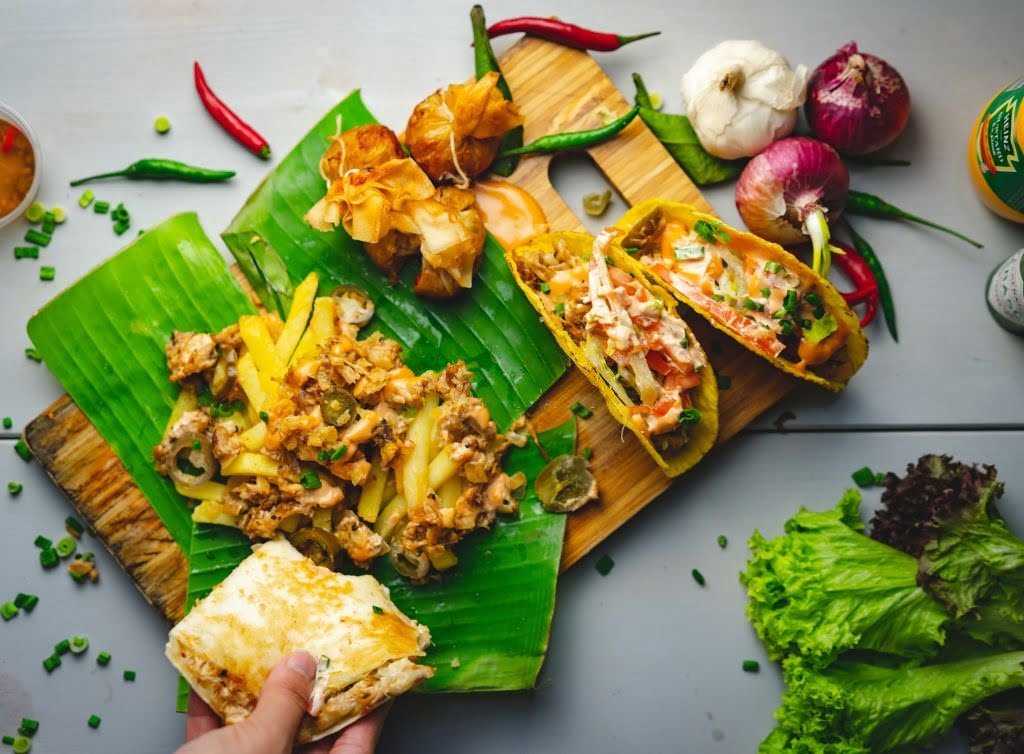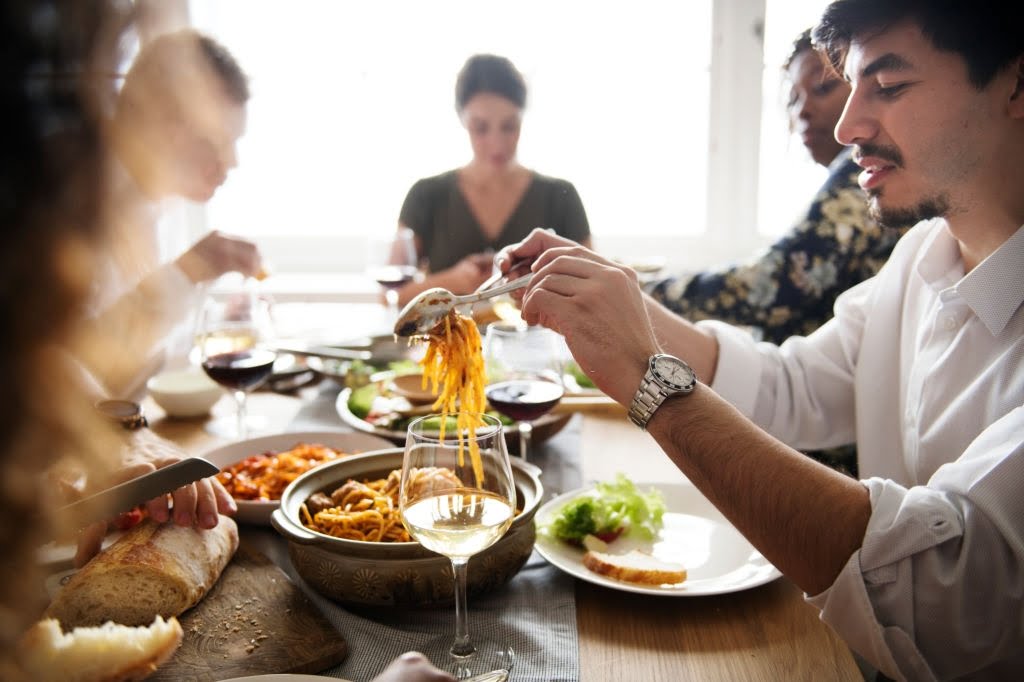How Food Differentiates from Different Cultures

Throughout generations different cultures have a unique way of representing themselves. Food is a large part of how people differentiate an area or culture from one another. Over the course of numerous decades, food has played an important role on how certain societies function. The availability of resource’s results in what develops as unique characteristics of the culture. In certain cultures food is considered to be symbolic and used as a sign of representation to either religion or lifestyle.
Each culture has their own distinct way of life. Within this paper there are two arguments made. One is, food allows an ethnic group to identify one from another. Another argument is that food allows individuals and cultures to be distinct from each other. Two specific areas that differentiates and are discussed within the paper is the Philippines and Italy.
Individuals use food as a way of expressing themselves, their religion, social values and their culture. Societies often identify and represent one another by connecting the nationality or area with food. “What you want to cook and eat is an accumulation, a function of your experiences– the people you’ve dated, what you’ve learned, where you’ve gone. There may be inbound elements from other cultures, but you’ll always eat things that mean something to you.” (Jennifer Lee). The ingredients used to prepare the food, the way food is consumed as well as the preservation allows us to compare and contrast the way other areas live, their experiences and how they survive. This also can be used in a cultural sense in terms of other regions and nations learning from their past experience and putting what they know to use, as well as the fundamental changes that create the character that forms a region or nation.
Within an area such as Italy, Food is considered to be a prominent identification of their lifestyle. The food is considered to be a way of life for Italians rather than nourishment. It is less of a survival task and more of an art style and much like artists, put passion into their work so do as Italians in preparing and making their food. There are numerous literature studies that express how long back food has played an important role in Italian culture. It is stated, “In a traditional Italian family, the mum is responsible for the cooking. A typical Italian dish will include ingredients such as olive oil, pasta, cheese, cured meat, beans, sauces, pesto, Italian tomatoes, bruschetta and japenades, and so on. Whether she is cooking chopped caprese salad or cauliflower and pine nut paccheri rigati with anchovies, the momma cooks with traditional ingredients that have been used for many generations in the family or the region where they reside.” (Flora Fine foods). This shows the generational impact of food on the Italian families and how they obtain learning experiences passed down from generation to generation. Although many individuals outside of the Italian culture may view Italian food and associate Italians with just spaghetti and pizza, Italy consisting of different regions all have their own take on their own Italian food in which, differentiates from one another.
The Philippines are known for having numerous diverse islands located in Southeast Asia, Filipino food is unique in its own way by being a hybrid of inspirations drawing from, Spanish, Japanese, Chinese, Western and Pacific Islander flavors due to the history of their colonization. These techniques originated from the Filipino people’s adaptiveness towards different cultures and ability to draw out what they need from those cultures by cross referencing their availability of resources. This mixture of different cultures help create the identity of the Filipino people. The main ingredient in any Filipino dish is steamed white rice due to the fact that rice is a common item in Asian cultures so it’s easier to make dishes that revolve around resources such as rice. “The Filipino cuisine embraces all the common elements of Asian cuisine – sweet, salty, spicy and sour. Ingredients commonly used include garlic, vinegar and soy sauce, all of which are used in chicken adobo – easily one of the most recognizable Filipino dishes.” (Chino F). The fact that Filipino people can create unique dishes such as their own, but also are able to include ingredients from other areas of the world while using such minimal resources creates an identity of its own by making a characteristic for the Filipino population and their dishes.
Over the course of my life, growing up with a Filipino mother and Italian father as well as being surrounded by numerous family members on both sides, I’ve been able to experience drastic differences within the food and in relation to the culture. My mother immigrated from the Philippines and taught how to cook at a young age by her mother as well as her relatives, had to adopt a new lifestyle within America but still hasn’t lost her roots with her cultural experiences and the way she makes and prepares food. Food has played an important role in my family’s life. My mom makes dishes that bring back memories from her childhood but also meals she enjoys to share and experience with my dad and I. She enjoys cooking and has even taught and continues to teach me how to make and prepare certain traditional and common Filipino meals.
In contrast, my dad born and raised in Brooklyn, raised by Italian parents hasn’t been taught how to cook due to the mother or the female mainly cooking the meals. This shows the different lifestyle he had to follow from a very young age. My father has been surrounded by different Italian meals and desserts prepared differently from Filipino dishes. Italian meals mainly consisted of tomatoes while my moms Filipino meals mainly consist of rice. Food allows for the availability of understanding why and how people live and survive through how certain dishes are prepared and made. It creates somewhat of an identity and allows you to see huge differences in different lifestyles. This makes my paper valid due to being multicultural and being able to experience two different cultures and an abundance of different meals created from different areas that impact us as a family.
Food Allows an Ethnic group to Identify as a Character
When discussing the topic about food culture excluding the impact on culture, people can tell which foods came from where. It’s somewhat of a hint of where individuals are from due to the fact that food has built up something of a reputation of the nation from the region they originated from, and in order to understand the reputation we look at the impact that it has on us in our current state. For example if you ask anyone, “what kind of ethnic dish is pasta?” mostly everyone would respond with “Italian”. This is because Italians have created a character and a reputation for themselves from the abundance of different ways they make pasta. Throughout the years, solidifying themselves as passionate food lovers and expressing that same passion into their food gives the food character and therefore makes the food their own.
Reputation plays an important role in the history of the food and its people create a sense of reliability. For instance, when you order pasta from places such as an Italian restaurant. Due to reputation and characteristics making up the identity of the food, creates a gap in the attributes for different foods. For instance, you’re more likely to order pasta from an Italian restaurant rather than a steakhouse. Reputation helps build character for the specific region and culture so therefore they go hand in hand.
Over decades, trade played a major impact on the Italian reputation and delicacies as stated, “Trade also brought different elements to the cuisine of the Italian peninsula. The seaside cities like Genoa, Venice, Naples, and Palermo grew wealthy both from importing and exporting food, especially spices” (John Mariani). Numerous cities have benefitted from the diverse availability of trade. Italians benefited both, economically as well as socially due to various different types of foods and seasonings able to expand over different areas which allowed the Italian culture and food to flourish.
The character of Italian food also comes from how it is presented. It’s presented almost as a symphony, just as there are movements in a symphony there is an entree for the first part of the meal, the main course as the second part, and finally dessert which acts as the third and final part. This display gives the food a sense of class which adds to the Italian characteristic. When you combine these two aspects of character and reputation you get the gist of the identity of the Italian food and therefore you also get the identity of the Italian culture; as stated, “Italy’s rich culinary history has developed with a variety of influences including geography, topography, climate, and the skills of the home cooks working with available ingredients.” (See Gall).
Food Allows Individuals and Cultures to be Distinct from Each Other
Different meals and ingredients creates a gap between different cultures and form originalities, this helps to create diversity between different areas. For example, I will be using the Italian culture and food as well as the Filipino delicacies to express the prominent differences. Italian dishes are more artistic in the sense of craft simply due to the fact of the abundance of supplies and crafty chefs from previous lifetimes. However, for Filipinos they have a limited supply or different ingredients due to their area. Filipinos have been able to adapt to the cultures around them for survival rather than a craft, this shows the attributes of the Filipino culture and the Italian culture clashing in differences. Italians were not adaptable before so their food is solely theirs with no indefinite root displayed whatsoever which gives them their own sense of authenticity. Filipinos however, have their own respected sign of authenticity by creating a hybrid food culture due to the past colonization of their area.
Filipinos were able to create new foods to identify themselves and their culture from others which, once again creates a gap of attributes. This helps us communicate cultures and as stated, “food functions symbolically as a communicative practice by which we create, manage and share meanings with others.”(Nevanna Stajcic). Through this, Filipino’s cultural differences help communicate with other nations as well as helping with resources and economy.
In conclusion, each culture has its own prominent differences. Many cultures and areas are proud to express their individuality through their food. You’re able to see how unique each area is by just based on the differences of their dishes. Although certain meals aren’t as appealing to some, Individuals display their hard work and pride in what they make.
Within this paper, The first argument states that food allows a gateway to the culture of that region. As numerous examples using the Italian culture, the reputation of the certain meal helps you identify who and where it’s from. Food plays an important role in how you’re able to identify one from another. Within the world there are numerous restaurants and stores based on certain ethnicities. You can almost always immediately spot, for instance, an Italian bakery or a Filipino market by either the language or certain key foods and how it’s presented.
The second argument within this paper is that food gives the different cultures their-own authenticity. In preparation for making certain meals and desserts, different cultures use numerous but somewhat different ingredients. Not all dishes are exactly the same. For instance, Italian and Filipino meals are prepared differently. Each meal consists of different ingredients that may not seem flattering to other people, but then again, that’s what makes the cultural differences within certain areas.
The prominent differences between areas helps support that not all countries are going to have the same foods or a low availability to them due to the difference in climate, income, and location. The reasons for these differences are natural, the geography and the history forms fundamental factors in each region’s culture and originality. The fact that its natural helps portray the culture’s true colors and due to this it’s easy to interpret, compare and contrast the differences and similarities.
Now more than ever we can see the impact food has on people and their culture, before people didn’t have technology or advanced forms of transportation so societies had to learn from other cultures somehow and the first step was food by trade. I am able to see the impact of food on culture in my everyday life by the people I meet. I can tell the different cultures apart because of their food and how they present them, this gives me a more clear understanding of people and even helps me better understand the world around me. In addition, because of advancements made in our society we can analyze how food impacts us through food studies with cultural significance.
Works Cited
Mariani, F. John. 2011. How Italian Food Conquered the world. St. Martin’s Press
F, Chino. March 20, 2014. “Our Food Tells Something About Our Society”. https://www.getrealphilippines.com/2014/03/filipino-food/
Choi, S Amy. December 18, 2014. “What Americans can Learn from Other Food Cultures”. https://ideas.ted.com/what-americans-can-learn-from-other-food-cultures/
Gall, See. “Italian Cuisine Characteristics”. https://www.ehow.com/facts_6170717_italian-cuisine-characteristics.html
Stajcic Nevanna. 2013. “Understanding Culture: Food as Means of Communication”. Hemispheres







Responses